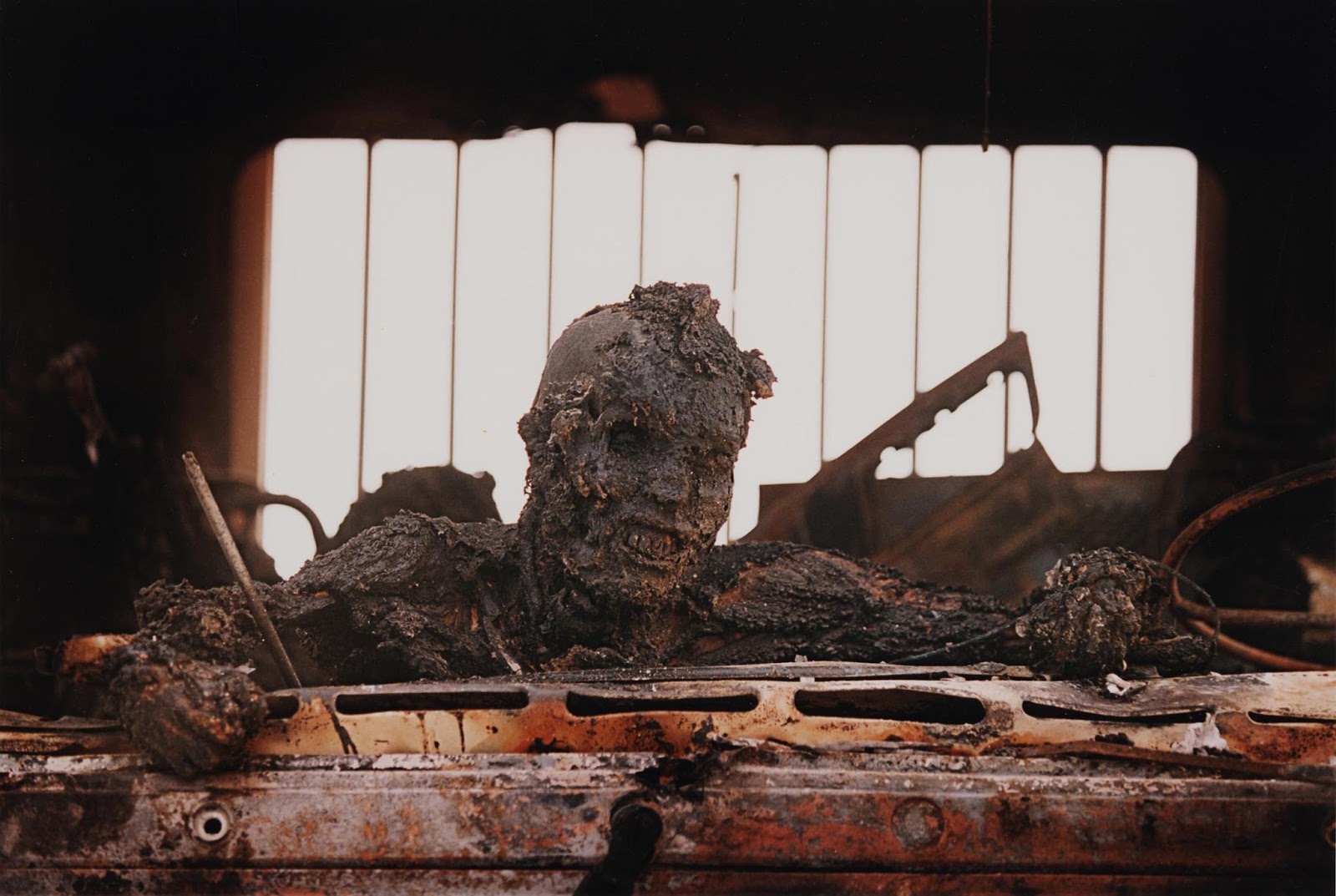
In the 1991 Gulf War, American pilots bombed a retreating Iraqi convoy. Most US media declined to publish this photo.
This photo at first was regarded by many editors as too disturbing to print, but later became one of the most famous images of the first Gulf War.
This photo was taken by Ken Jarecke, his quote: “If I don’t photograph this, people like my mom will think war is what they see on TV”. Below is his account regarding this picture.
The image shows a burned-beyond-recognition Iraqi soldier in the front window of a destroyed truck. The sun is coming in through the back of the truck and most of the surfaces in the image are burned and just torn up, so it’s almost a black and white image although it was made on color film. It was early in the morning, we had been up most of the night.
There was supposed to be a ceasefire in about an hour, maybe an hour and a half. We had traveled east from Nasiriya towards Basra, hooked up with Highway 80 and we started traveling south towards Kuwait City.
And we came across this…just a single lorry, kind of in the middle of a double-lane highway. I was with a public affairs officer with the US Army and he said: “I don’t really get my jollies out of making pictures of dead people”.
And I said: “If I don’t make pictures like this, people like my mother will think what they see in war is what they see in the movies”.
He didn’t try to stop me, he let me go and I just went over there. And he might have been the driver of the truck, he might have been the passenger, but he had been burned alive and it appears as though he’s trying to lift himself up and out of the truck.
I don’t know who he was or what he did. I don’t know if he was a good man, a family man or a bad guy, or a terrible soldier or anything like that. But I do know that he fought for his life and thought it was worth fighting for.
And he’s frozen, he’s burned in place just kind of frozen in time in this last ditch effort to save his life. At the time it was just something… well, I better make a picture of this.
I thought there might have been better pictures. I literally shot two frames and moved on to other things and I didn’t really think a whole lot about it.
The first Gulf War was done entirely under the US Department of Defense Pool system, which means any press organization that was a member of that pool had access to everyone else’s work.
The film was processed and when the image got to the AP office in New York, they all made copies for themselves to show people but then they pulled it off the wire. They deemed it was too sensitive, too graphic even for the editors.
Basically, this picture was unseen in the US. In the UK it was published by the London Observer and I was actually going through Heathrow and I picked up the newspapers and I saw it was quite big, and that was basically the scene I thought I was going to see in all the newspapers around the world since everybody had access to the image.
It caused quite a controversy in London, which is what images like that are meant to do. They’re meant to basically cause a debate in the public: “Is this something we want to be involved in?”.
How can you decide to have a war if you are not fully informed? You need to know what the end result will be, what the middle result will be.
And since then, it’s an image that has a life of its own. It’s been published hundreds of times, you can find it all over the internet, it just keeps going and it’s published as much today as it ever has been.
The Highway of Death refers to a six-lane highway between Kuwait and Iraq, officially known as Highway 80. It runs from Kuwait City to the border town of Safwan in Iraq and then on to the Iraqi city of Basra. The road had been used by Iraqi armed divisions for the 1990 Invasion of Kuwait.
Postwar studies found that most of the wrecks on the Basra roadway had been abandoned by Iraqis before being strafed and that actual enemy casualties were low.
After the war, correspondents did find some cars and trucks with burned bodies, but also many vehicles that had been abandoned.
(Photo credit: Ken Jarecke).